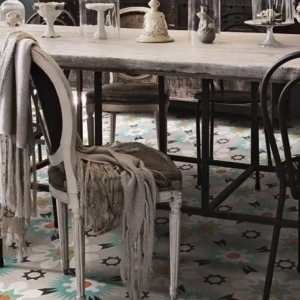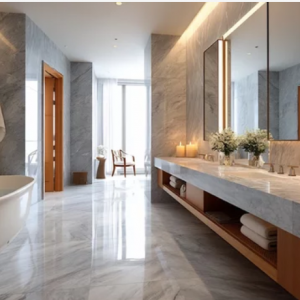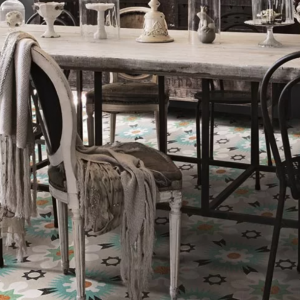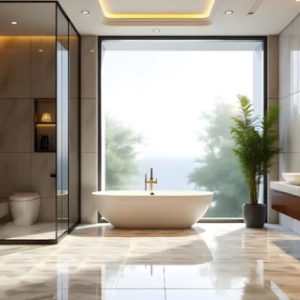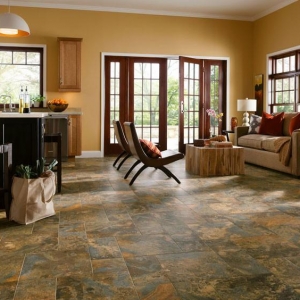Few rooms in any building work as relentlessly as the bathroom. It starts the day with showers, shaving cream, and steam, then transitions to makeup, hair dryers, and the occasional spilled bottle of nail polish remover. By evening it has survived muddy soccer cleats, hotel luggage wheels, or the curious paws of a family pet. All of that activity happens on the same few square meters of tile, which is why the choice of surface material deserves more thought than a quick swipe of the color fan deck.
Early Warning Signs of a Low-Quality Surface
The market is crowded with products that look fine under showroom lighting. Yet within months of installation, hairline cracks can appear around the drain, or the glossy finish can dull into a cloudy film. These early warning signs point to a simple truth: not all tiles are created equal. Investing in premium bathroom tiles up front avoids the slow-motion failure that plagues budget renovations, whether the project is a single-family bungalow or a 200-key resort.
The Science Behind Tile Durability
Durability starts with raw materials. Inexpensive tiles often use lightly compacted clay and lower firing temperatures to keep costs down. The result is a body that is porous, brittle, and prone to chipping when a shampoo bottle drops from the upper shelf. Premium bathroom tiles use refined clays, tighter presses, and kilns that run hotter for longer. The finished product can shrug off impact and abrasion that would scar lesser surfaces. In a hotel corridor bathroom that sees a rotating cast of guests, that resilience keeps the housekeeping supervisor from logging yet another maintenance ticket.
Water Resistance: The Invisible Shield
Water resistance is equally critical. Every shower produces aerosolized droplets that settle on walls and floors. Over time, those droplets migrate into grout lines and any microscopic pores in the tile itself. Once moisture reaches the substrate, it can swell plywood, corrode fasteners, or foster colonies of mold that announce themselves with a musty odor. Premium tiles are tested to absorb less than 0.5 % of their weight in water—essentially waterproof under normal use. That tight structure also means they dry faster after cleaning, a bonus for hotels turning rooms around in under an hour.
Slip Resistance Without the Sandpaper Feel
Slip resistance is a safety feature that becomes obvious only when it is missing. A glossy, untextured surface may look pristine under LED downlights, but introduce a few drops of water and it turns into a skating rink. Many premium bathroom tiles now come with micro-texturing or matte finishes that register high on the dynamic coefficient of friction test. The surface still feels smooth to bare feet, but the microscopic ridges create enough grip to prevent accidents. A knowledgeable tiles supplier can provide the exact slip rating needed for ADA-compliant guest rooms or a busy family bathroom that doubles as a dog-washing station.
Fade-Proof Patterns That Age Gracefully
Colorfastness is another under-appreciated virtue. Surface-printed patterns can fade under UV exposure from skylights or even strong LED fixtures. A single scratch can reveal a base color that clashes with the original design. Premium tiles solve this with through-body color, layered glazing, or full-thickness stone veining. Even if a corner chips, the exposed area blends in rather than screaming for a replacement.
Cleaning Time: From Chore to Quick Swipe
Maintenance labor drops dramatically with higher-grade surfaces. Cheap tiles often have tiny surface pits that trap soap scum and mineral deposits. Over months, these pits darken and require aggressive cleaners that weaken the glaze and surrounding grout. Premium bathroom tiles have a fired finish so tight that most messes lift off with a soft cloth and neutral pH cleaner. In commercial settings, that translates into lower chemical inventories and faster cleaning cycles. In homes, it means fewer weekends lost to scrubbing.
Bathrooms as Property-Value Multipliers
Property value is where the investment pays off most visibly. Real-estate photographers know that sharp, bright bathrooms photograph well and attract online clicks. Buyers equate a pristine bathroom with a well-cared-for building. For hotel operators, the same visual cues support higher nightly rates and glowing guest reviews that mention “spotless” or “luxury feel.” The tiles are not just a background detail; they are part of the brand story.
Selecting a Tiles Supplier Who Thinks Ahead
Even the best tile, however, can disappoint if the supply chain falters. A reputable tiles supplier acts as a project partner, not just a box mover. They track dye lots to ensure that accent strips match the field tile, store extra inventory for future repairs, and coordinate deliveries so that cartons arrive before the contractor schedules the installer. On a recent boutique hotel renovation in Austin, the tiles supplier flagged a looming customs delay and air-freighted a small batch so that the grand opening stayed on schedule. The added freight cost was a fraction of one night’s lost revenue.
Lifecycle Math That Favors Quality
When the total lifecycle cost is tallied, premium bathroom tiles reveal their true economy. Suppose a homeowner installs $4-per-square-foot tile that needs replacement after twelve years. Add removal, disposal, new thinset, and labor, and the second install cycle pushes the real cost closer to $12 per square foot. A $9-per-square-foot premium tile that lasts thirty years avoids both the disruption and the repeat expense. The same math scales for hotels, where downtime means lost bookings.
Pay Once, Benefit for Decades
In short, premium bathroom tiles are not a cosmetic indulgence; they are a strategic decision that affects safety, maintenance, asset value, and daily satisfaction. When the alternative is a cycle of patch-and-repair, the higher initial price becomes the lowest long-term cost.



